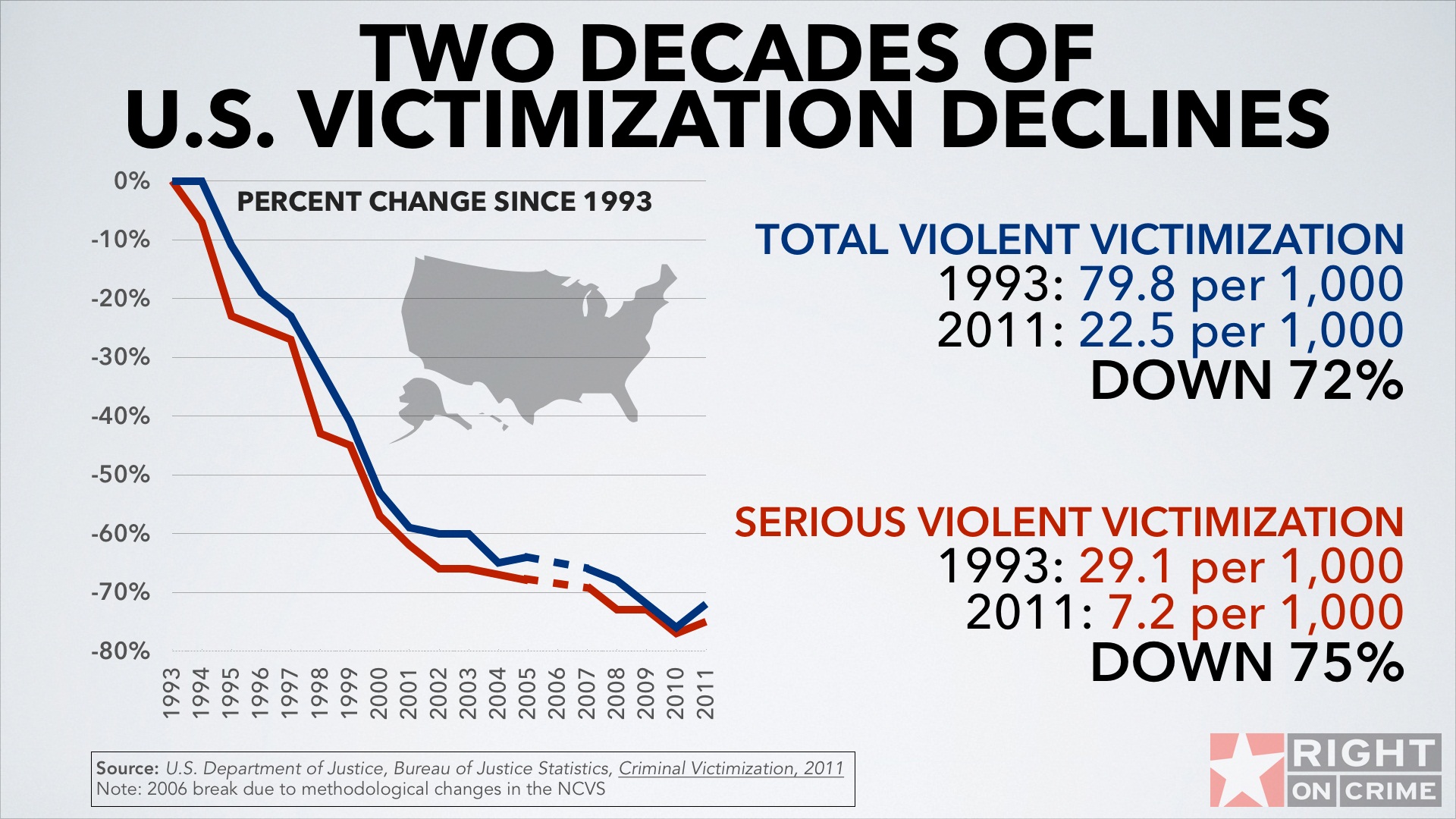A new report from the Department of Justice is making waves with its declaration that victimization rates increased between 2010 and 2011. After a 72 percent decrease since 1993, the violent victimization rate rose 17 percent between 2010 and 2011, while property crime rose 11 percent.
It is important to note, at the outset, that this new report only concerns victimization rates. Victimization rates are a data subset only collected by the federal government, and are calculated from a poll of a sample size of the population with questions designed to determine whether the members of the sample were victims of a variety of types of crimes. Victimization rates are purposed with capturing all criminal incidents, including those otherwise unreported to law enforcement.
In contrast to victimization rates, actual crime rates are totals of all the crimes reported to the U.S. Department of Justice by individual law enforcement entities across the United States.
Even considering the one-year increase in victimization rates, the 72 percent drop in violent crime victimization rates since 1993 reveals a lower crime rate today than the United States has experienced in many years.

Furthermore, actual crime rates reveal a dramatic decrease in the last two decades. The violent crime rate is down 47 percent between 1991 and 2010 (the earliest and latest available data). Property crime is down 43 percent across the United States.
In 2010 alone, violent crime dropped an additional six percent while property crime dropped 2.7 percent more than the prior year.
Preliminary data from 2011 shows a continued drop in crime—across the nation, violent crime dropped four percent while property crimes decreased 0.8 percent.
But Texas, specifically, boasted a greater drop in crime than the rest of the United States. Violent crime is at its lowest rate since 1978, and property crime is at its lowest rate since 1973. Meanwhile, in the last year in Texas, property crimes dropped 8.3 percent and violent crimes dropped 9.3 percent.
Finally, crime rates naturally ebb and flow from one year to the next. For instance, violent crimes dropped each year from 1991 until 2004. Violent crimes marginally rose in 2005 and 2006, after dropping each additional year until 2010. Property crime also dropped every year from 1991 until 2000, very slightly increased in 2001 and 2002, and then dropped each year until 2010. The Texas data too reveals annual ebbs and flows between each year and in each type of crime. Annual increases and decreases can only be properly analyzed in the perspective of multi-year trends. Which, again, reveal decades of drops in Texas and across the nation.
There are a wide variety of theories as to why crime is so low today, but asking why isn’t really the important part. Rather, Right on Crime, Texas, and a variety of other states from Pennsylvania to Oregon to Florida are asking how we can keep crime rates low.
Fortunately, we know the answer to that question. For example, in Texas, the Legislature took the bold step of using free market principles—limited government, personal responsibility and fiscal accountability—to reduce unnecessary expenditures, increase the effectiveness of the criminal justice system, and improve public safety. Texas prioritized effective community supervision to reduce technical revocations, implemented graduated sanctions, and increased treatment options for mentally ill offenders or those with drug addictions. In so doing, Texas avoided $2 billion in prison construction and operation costs, and, as noted earlier, continued to see greater decreases in crime than the rest of the United States.
We’ve seen substantial drops in crime in the United States for two decades now. One year of data does not change that our streets are safer today and that we know how to keep them safe.